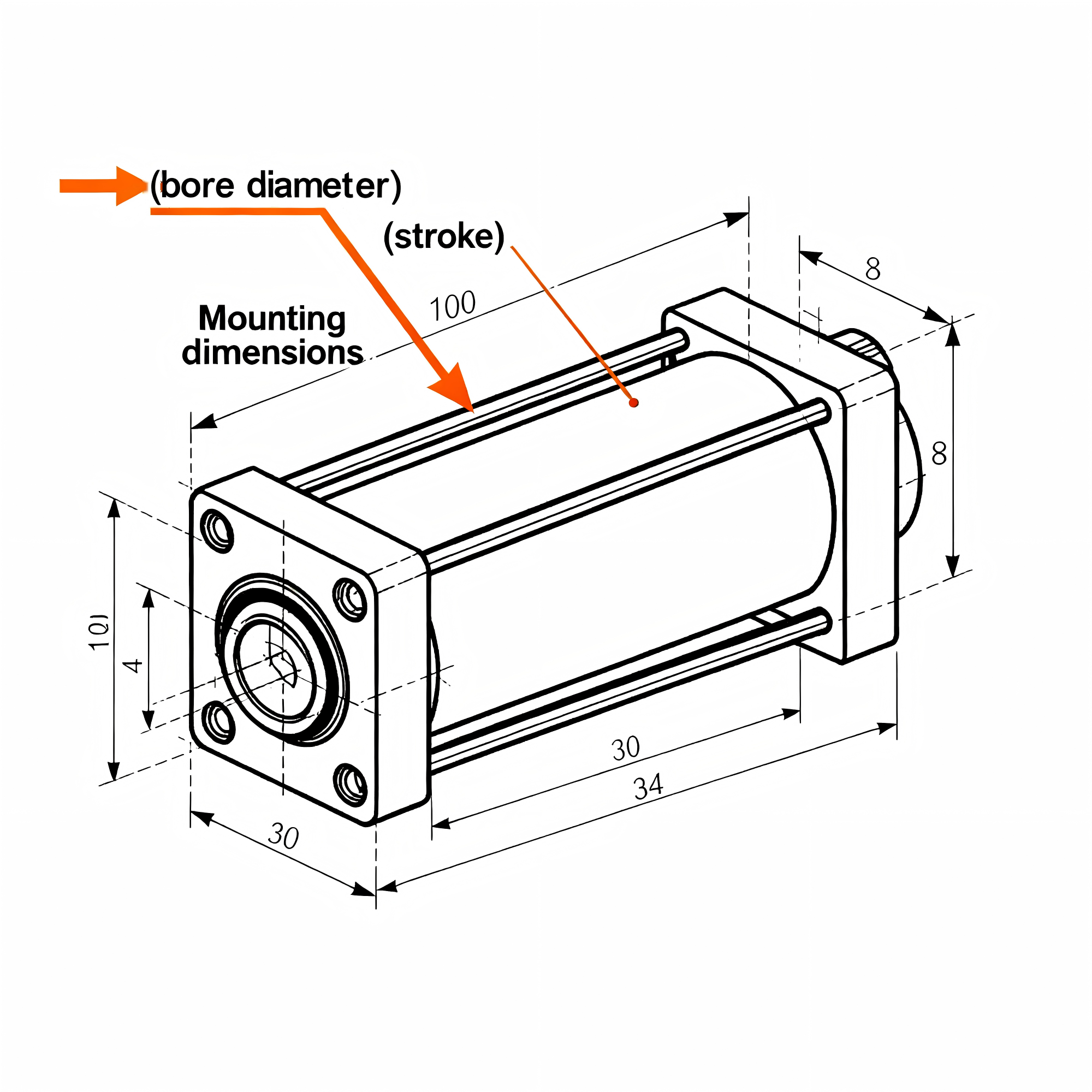Views: 0 Author: Site Editor Publish Time: 2025-10-16 Origin: Site
In the world of industrial automation, where precision, power, and reliability are paramount, one component stands out as a universal force: the standard pneumatic cylinder. Often called the "muscle" of automated machinery, these linear actuators are fundamental to countless applications, from simple clamping tasks to complex material handling systems.
A standard cylinder is a pneumatic actuator that converts the energy of compressed air into a linear, reciprocating motion. Its core components include a cylindrical barrel, a piston that moves inside it, a piston rod that transmits the force, and two end caps that seal the assembly. The "standard" in its name typically refers to its compliance with international dimensional standards, most commonly ISO 15552 (which superseded ISO 6431 and VDMA 24562). This standardization ensures interchangeability between brands and simplifies design, sourcing, and maintenance.

The robust design of a standard cylinder is key to its lon
gevity and performance. Key characteristics include:
Standardized Dimensions: Adherence to ISO 15552 guarantees consistent mounting dimensions, port sizes, and piston rod threads across different manufacturers.
Robust Construction: The cylinder tube is typically made from a high-strength aluminum alloy, offering an excellent balance of lightness and durability. The piston rod is usually crafted from hard-chromed, high-tensile steel to resist wear and corrosion.
Adjustable Cushioning: To minimize impact and noise at the end of the stroke, most standard cylinders feature adjustable pneumatic cushioning at one or both ends. This allows for smooth deceleration, protecting the cylinder and the machinery.
Position Sensing: Integrated sensor slots or grooves along the barrel allow for easy mounting of non-contact proximity sensors (often inductive sensors) to detect the piston's position, enabling precise control logic.
Variety of Mounting Options: A wide range of standard mounting accessories is available—including foot, flange, and trunnion mounts—providing flexibility for installation in virtually any orientation.
Proven Reliability & Long Service Life: With millions of cycles in demanding environments, their simple and robust design makes them exceptionally reliable with minimal maintenance.
Cost-Effectiveness: As mass-produced components, they offer a very low total cost of ownership. Their simplicity also keeps repair costs down, with readily available seal kits.
High Interchangeability: The ISO standard ensures that a cylinder from one leading brand can often be directly replaced with another, reducing downtime and mitigating supply chain risks.
Rapid Movement & High Force: Pneumatic cylinders provide very fast movement speeds. While force output is dependent on bore size and air pressure, they are capable of generating significant force for pushing, pulling, and lifting operations.
Intrinsic Safety: In the event of a load drop, pneumatic systems are inherently safer than hydraulics as they do not store energy under high pressure in the same way, making them ideal for many clean and safe industrial applications.
The versatility of standard cylinders makes them suitable for a vast array of tasks, including:
Clamping and Fixturing in machining and assembly
Pushing and Ejecting parts from molds or conveyors
Lifting and Positioning items in packaging and material handling
Opening and Closing doors, gates, and lids
When specifying a standard cylinder, key parameters to consider are:
Bore Size: Determines the force output. Common sizes range from 32mm to 125mm.
Stroke Length: The distance the piston rod travels.
Cushioning Needs: Whether adjustable cushioning is required for the application's speed and load.
Mounting Style: Dictated by the machine's physical constraints and the direction of the load.

In an era of increasingly specialized components, the standard cylinder remains a testament to the power of simplicity, reliability, and global standardization. It is a fundamental building block of modern industry, providing the dependable linear motion that drives productivity and innovation across the globe. For any engineer designing a new machine or maintaining an existing system, the standard cylinder is a trusted and efficient solution that continues to prove its worth every day.